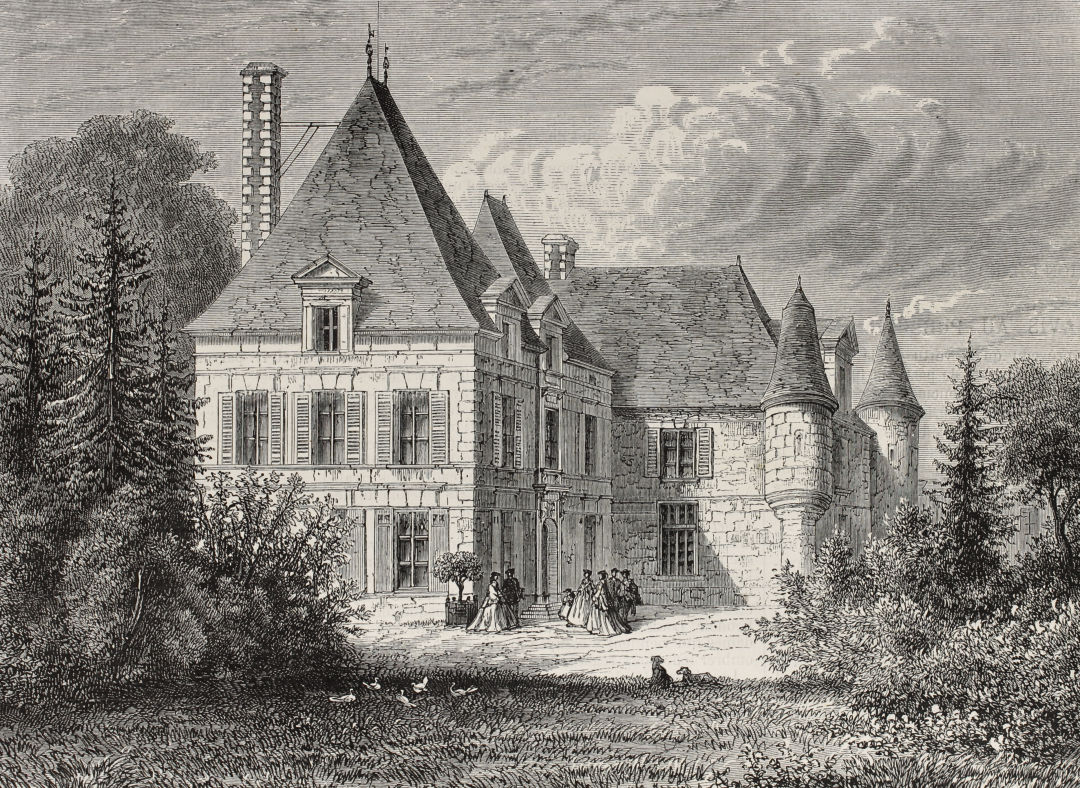How the Irish Changed the Wine World

A print from 1868 depicting France's Château Haut-Brion. The name of the chateau is believed to be a corruption of the Irish name O’Brion.
Image: Marzolino/Shutterstock
One doesn’t generally think of wine and Ireland in the same sentence. However, there are a few wineries in Ireland, even though the country is north of the designated growing area for vitis vinifera, the prevailing type of wine grape we are familiar with. But while Ireland may not have many wineries, the Irish have had a dominant influence on wine outside their country.
In his book How the Irish Saved Civilization, Thomas Cahill demonstrates how, for centuries, Ireland and England have been involved in numerous skirmishes or outright battles. The situation became so desperate in the 18th century that Irish men would fight alongside French or Spanish soldiers against England. After doing so, they often had a price on their head, and most stayed abroad, especially in France.
Opportunities were greater there, and many became involved in shipping. Wine was the most lucrative item to ship, and it wasn’t a big leap to go from shipping wine to making it. Two prominent chateaux in Bordeaux formed by Irish men are Château Léoville Barton and Château Lynch-Bages. One of the Grand Cru wines, Château Haut-Brion, is supposedly a corruption of the name O’Brion. While Lynch-Bages has been sold, Léoville Barton remains in the family.
Another major effect of English repression was the deportation of alleged Irish criminals to Australia. For a good part of the 18th century, the island served as a penal colony. Eventually, it became settled and many Irish and members of oppressed religious communities traveled there willingly.
Many parts of Australia became wine grape growing regions and the names of Irish wineries in Australia dominate. Notable names include Jim Barry, the O’Shea family of Mount Pleasant Wines and the Horgan family in Leeuwin Estate. Unlike in France, Australians preferred easy drinking full bodied wines that matured quickly. One of the most sought-after wines in the world is the Grange Hermitage from Penfolds, an unbelievably rich shiraz.
While Europe was the most convenient place for Irish expats, some made it to America. From the Civil War to the Erie Canal, Irish participated in building America. When their work was complete, many turned westward.
One such individual was James Concannon, whose wines are credited with being the first made in California from French vines. He brought vines from Château Margaux and claimed to make the finest cabernet sauvignon in California. James’ grandson, Jim, collaborated with the University of California at Davis to establish specific clones for cabernet sauvignon. Known as the Concannon clones, they make up over 80 percent of the cabernet sauvignon vines planted in California.
The most recognized Irish name in the world might be Hennessy, the cognac. It’s made with a distillation of wine made with the ugni (pronounced "oonyee") blanc grape, and makes up 50 percent of the world’s cognac sales.
What does the future hold for the relationship between the Irish and winemaking? It's unclear, but with climate change, perhaps Ireland will become the next Bordeaux.
Bob McGinn has spent his entire career in the wine industry—forming wine clubs, working in wine sales marketing and engaging in all facets of the winemaking process, including vine management, fermentation and yeast analysis. He has developed wine programs for companies such as Marriott, Sheraton and Smith & Wollensky, and consults with local restaurants. You can read more of McGinn’s work at gulfcoastwinejournal.com.